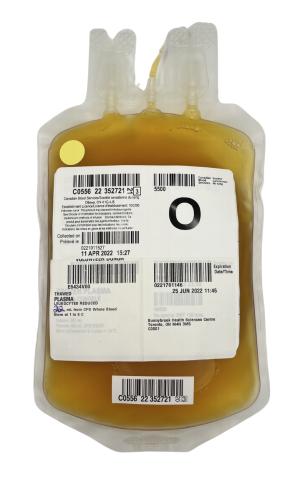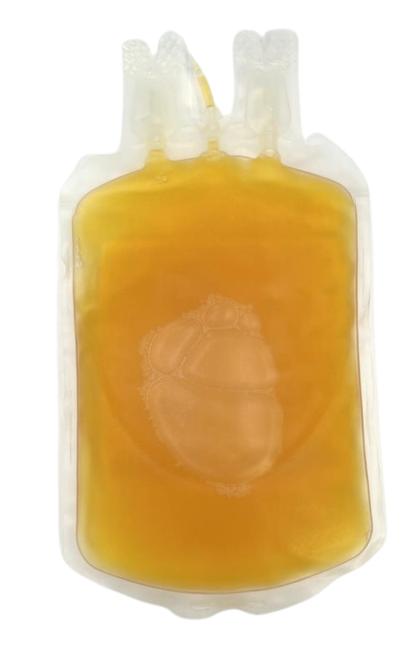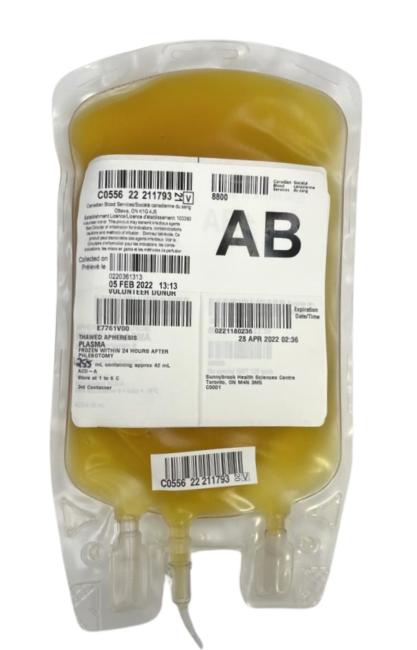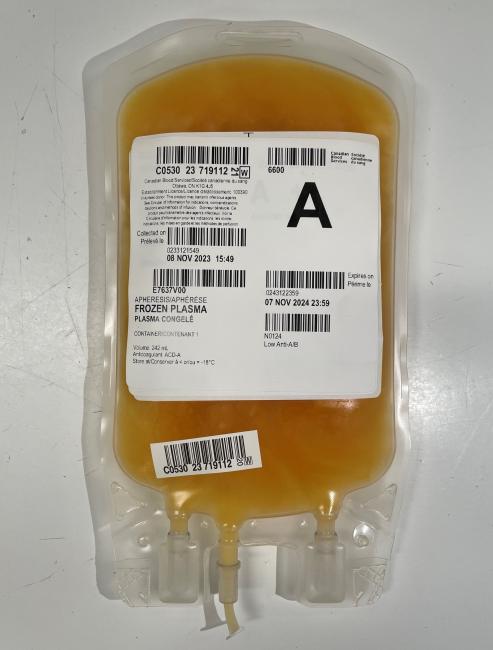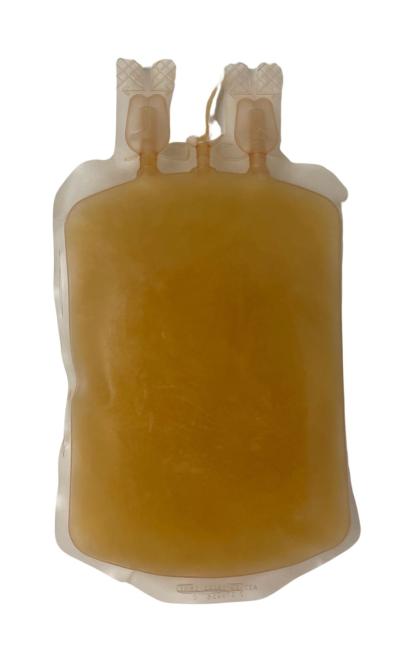Plasma
Canadian Blood Services produces different types of plasma, including:
- frozen plasma (FP)
- apheresis frozen plasma, psoralen-treated.
FP can be derived through whole blood or apheresis collection, while apheresis frozen plasma, psoralen-treated is currently derived from apheresis collection; both component types are shipped frozen to hospitals. For information on solvent detergent plasma (S/D plasma) please refer to Canadian Blood Services’ publication on Solvent detergent (S/D) treated plasma (Octaplasma).
As of April 1, 2025, production of cryosupernatant plasma (CSP) was discontinued by Canadian Blood Services. CSP will be available until the current inventory is depleted, which is estimated to be depleted by April 1, 2026. For more information, please see customer letter CL_2025-02 in the customer letter database.
There are several conditions or characteristics that are associated with a change in the appearance of plasma units. Whether or not a blood component is suitable for transfusion is determined by local hospital policy and procedures.
